Some NFL teams draft for need, and some draft strictly with an eye on talent. Either way, most teams still have weaknesses on the roster after the draft is over. Below, Football Outsiders looks at the biggest hole on each NFL roster now that the draft is done.
Many of the advanced stats referenced below are explained here.
AFC East | AFC North| AFC South | AFC West
NFC East | NFC North | NFC South | NFC West
AFC EAST
By Scott Kacsmar
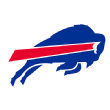
Buffalo Bills
Tight end
The Bills immediately hit on some of their biggest needs in the draft with wide receiver Zay Jones, right tackle Dion Dawkins and cornerback Tre'Davious White. They did not, however, select a tight end in what was a rich draft for the position. Charles Clay has been serviceable for the team the past two years, but nowhere near worth the sixth-highest average salary at his position. While Clay led the team in targets in 2016 due to Sammy Watkins' injury, he also averaged a career-low 9.7 yards per catch, and his 36.8 receiving yards per game were his lowest since 2012. The Bills are paying above-market value for below-average play at the tight end position, and that will likely continue through 2017.
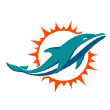
Miami Dolphins
Guard
After years of using high draft picks on wide receivers and offensive tackles in recent seasons, Miami targeted linebackers in this year's draft. With that unit addressed, Miami's offensive line remains the biggest area of concern, particularly at guard, where the team hasn't invested first-round picks. Veteran Jermon Bushrod struggled in his move to right guard last season, and Miami waited until the fifth round to take Utah guard Isaac Asiata. A healthy return of center Mike Pouncey and a full-time move to left tackle for Laremy Tunsil should help the O-line, but Miami's interior could still struggle. That would be a problem for quarterback Ryan Tannehill, who has always done a below-average job of handling pass pressure. Last season, Tannehill ranked just 20th in QBR (21.2) while pressured.
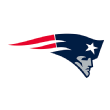
New England Patriots
Offensive line
Did the rich get richer? The defending Super Bowl champions have strengthened their skill positions with the additions of Brandin Cooks, Mike Gillislee, Rex Burkhead and Dwayne Allen. They added Kony Ealy to the pass rush and Stephon Gilmore to the secondary. The Patriots made only four selections in the draft, but this was not a team with many pressing needs. (In a previous article, we said that the Patriots' biggest hole was at defensive end, and they drafted two of them.)
If anything looks unimpressive with this roster, it would be the offensive line. Even that is far from a liability, given that Nate Solder is a solid left tackle and the Patriots drafted third-rounder Antonio Garcia, a potential replacement down the road. Right tackle Marcus Cannon looked far improved in his first full season as a starter. The Patriots are still relying on some younger players such as left guard Joe Thuney and right guard Shaq Mason, but offensive line coach Dante Scarnecchia will put the best he can in front of a 40-year-old Tom Brady this season.
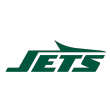
New York Jets
Quarterback
Outside of the defensive front seven, the Jets are fairly weak everywhere, but quarterback presents the least hope. While some thought the team might sign veteran Jay Cutler or draft a quarterback high (again), the Jets are rolling with Josh McCown, Bryce Petty and Christian Hackenberg this year.
If being terrible enough to earn the No. 1 pick in the draft is a goal, then McCown might be the right man for the job. He has recently helped Tampa Bay (2014) and Cleveland (2016) to the top pick in the draft, and his Browns finished No. 2 in draft position in 2015. Petty's 19.4 QBR last season was the lowest among any quarterback with at least 75 action plays. Our QBASE projection system for college quarterbacks has Hackenberg as one of the worst prospects since 1996. So the Jets may already be in the lead in the race for USC's Sam Darnold in the 2018 draft.
AFC NORTH
By Rivers McCown

Baltimore Ravens
Wide receiver
Ozzie Newsome drafted meat and potatoes. He solved a lot of potential problems in the defensive front seven and on the offensive line and spent his first-round pick on Alabama CB Marlon Humphrey. Baltimore's defense is now stacked pretty much everywhere except the line, and even that unit has well-paid run-stopper Brandon Williams and a promising young player in Michael Pierce.
But Baltimore's biggest problem last season was on offense, and the Ravens watched Steve Smith Sr. retire and did absolutely nothing about it. Right now Mike Wallace is their No. 1 receiver. You can ask the Minnesota Vikings and Miami Dolphins how that went for them. The Ravens will need third-year WR Breshad Perriman to show more than he has in his first two seasons. The nominal No. 3 receiver is slot man Michael Campanaro, who is oft-injured and has not showcased much of the skill needed to draw those Wes Welker comparisons. Perhaps Chris Moore or Keenan Reynolds will break out this offseason, but that's expecting a lot.

Cincinnati Bengals
Offensive line
Say what you will about Joe Mixon's character, but you can't dispute that the Bengals had a nice draft on raw talent. They replenished their skill positions on offense by drafting Mixon and first-round WR John Ross, which in theory should help Andy Dalton re-establish the serial 10-or-11-wins-and-an-opening-round-playoff-loss brand of football we're all so familiar with.
But the Bengals let Kevin Zeitler and Andrew Whitworth, their two best offensive linemen, walk in free agency. The Bengals' internal monologue is looking something like this right now:
Step 1: Pray Jake Fisher and Cedric Ogbuehi are ready to take over at offensive tackle instead of being the guys who would never step on the field on pure merit the past two seasons.
Step 2: Guard Christian Westerman was a find, right? Please let that be the case. Please don't make us start Andre Smith inside.
Step 3: Can you win something when your best offensive lineman is Russell Bodine? We're asking for a friend's franchise.

Cleveland Browns
The learning curve
It's hard to not address most of your weaknesses -- at least on paper -- when you start off the draft with a billion picks and receive more along the way via the exploit of trading down with teams that need a quarterback (or a spot to dump their quarterback). Indeed, the Browns took stabs at every hole on the team they could. DeShone Kizer is an honest-to-goodness quarterback prospect, and Myles Garrett is a sure-thing pass-rusher. Over the years, this could be the beginning of a nucleus that helps Cleveland get somewhere.
But as with all teams undergoing a youth movement, expect some growing pains. Mario Williams was a sure thing, and he had four sacks in his rookie season. Vic Beasley Jr. also started slow out of the gate. Kizer should not be rushed along, and Jabrill Peppers and David Njoku also could use some time to grow into their positions. None of these players is even 22 years old yet. The Browns are nearing the point of fixing most of the actual holes on their roster. But it may take some fits and starts before they become the champions of anything but the draft.

Pittsburgh Steelers
Cornerback
The Steelers got an amazing season from Ross Cockrell last year and have been piecing together decent production from unheralded players for a while. But after addressing many of their real holes in the draft, this is what we're left with: nits to pick. (Well, this and Mike Tomlin having to shut his receivers up on Twitter.)
Artie Burns should eventually be a good starter. But between new third-rounder Cameron Sutton, William Gay or perhaps someone like the oft-injured, oft-forgotten Senquez Golson, they're mostly aiming for competent. Pittsburgh doesn't have a real star cornerback, which is why the Steelers have increasingly begun to favor more and more Tampa 2 looks under Mike Tomlin's watch.
AFC SOUTH
By Tom Gower

Houston Texans
Right tackle
The Texans addressed their most prominent need by trading up in the first round to select Clemson quarterback Deshaun Watson. They also addressed what we identified pre-draft as their quiet need, a complement to Lamar Miller at running back, by drafting D'Onta Foreman in the third round. Adding speed to the linebacker corps with Zach Cunningham in the second round also filled a hole.
What the Texans did not do until Day 3, though, was address the offensive tackle spot. While they did select Julien Davenport in the fourth round, the Bucknell product will very likely need some time to adjust to a much higher level of competition and seems unlikely to fill the void created by Derek Newton's career-threatening knee injuries.
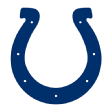
Indianapolis Colts
Defensive continuity
Ryan Grigson's strategy as Colts general manager was to complement Andrew Luck with a lot of veterans on defense. This worked predictably, giving Indianapolis an average defense until the inevitable collapse came in 2016 and the Colts finished 29th in defensive DVOA. Chris Ballard has remade the defense this offseason between the draft and free agency, with an almost all-new group of linebackers, Johnathan Hankins on the defensive line and high picks Malik Hooker and Quincy Wilson playing big roles in the secondary.
It is now incumbent on Chuck Pagano and Ted Monachino to quickly assemble these players into their scheme, make whatever adjustments are needed to fit the new players and get them playing well together. On paper, the defense looks like it could improve greatly. But that guarantees nothing in the NFL.
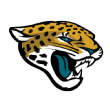
Jacksonville Jaguars
Quarterback
Blake Bortles' improvement from his dismal first season to an encouraging second gave the Jaguars hope heading into 2016. His passing DVOA was exactly the same in 2016 as it was in 2015, though, and at minus-9.9 percent, he ranked outside the league's top 20 each season. Tom Coughlin's arrival in the front office this offseason and the team's public statements led us to believe they might look for an alternative to Bortles. Yet the draft, like free agency before it, came and went without the addition of a passer who might serve as a credible alternative. (Chad Henne, last seen being outplayed by rookie Bortles, does not count.) Jacksonville is set to sink or swim with the former third overall pick this year.
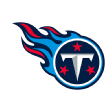
Tennessee Titans
Cornerback
It seems odd to list a position the Titans drafted in the first round as a biggest hole, but defensive coordinator Dick LeBeau has historically been loath to play even first-round rookies. The Titans seem likely to trot out Logan Ryan, paid like a No. 2, and 2016 fifth-rounder LeShaun Sims, with first-rounder Adoree' Jackson competing with Brice McCain for duties in nickel. This grouping inspires more trust in Nashville than outside it and could prove Tennessee's undoing in its quest to return to the playoffs after an eight-year drought.
AFC WEST
By Scott Kacsmar
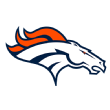
Denver Broncos
Quarterback
In the past two offseasons, we have questioned the Broncos' answers at offensive tackle, as well as their failure to restock defensive line talent, or add a reliable receiver outside of Demaryius Thomas and Emmanuel Sanders, all as post-Peyton Manning questions loomed. Denver addressed some of its biggest needs early in the draft with the selections of left tackle Garett Bolles and defensive end DeMarcus Walker. Tight end Jake Butt also could be a fifth-round steal should he recover properly from ACL surgery.
However, quarterback is still a big question mark for the Broncos heading into 2017. There will be a competition between Trevor Siemian and 2016 first-round pick Paxton Lynch. Siemian had a tendency to play things safe last season, and he ranked 21st in both DVOA and QBR -- or, barely above Brock Osweiler. Lynch was more liberal with his passing but also was off-target on 24.7 percent of his throws, which would have been the highest rate in the league among 2016 starters according to ESPN Stats & Information. Chad Kelly, the final pick in the draft, should make Denver's roster as the No. 3 quarterback, but there are not many reasons for optimism on this depth chart as John Elway continues to try to find an answer at QB.
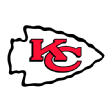
Kansas City Chiefs
Inside linebacker
The Chiefs drafted much-needed competition at some of the weaker spots on the depth chart, including quarterback Patrick Mahomes, running back Kareem Hunt and defensive end Tanoh Kpassagnon. Those players may not contribute a lot in 2017 but could still do more than Ukeme Eligwe, a late fifth-round pick and the only linebacker the team selected.
The Chiefs appear content to rely on Derrick Johnson at inside linebacker, despite the fact that he's recovering from a ruptured Achilles and will turn 35 in November. The Chiefs have only marginal players to fill in next to Johnson with Ramik Wilson, D.J. Alexander and Justin March-Lillard on the depth chart. The need to replenish this position should be even greater next offseason.
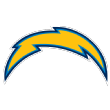
Los Angeles Chargers
Safety
For a team coming off a 5-11 season, the Chargers have an impressive starting lineup, especially after adding another wide receiver (Mike Williams) and two guards (Forrest Lamp and Dan Feeney) to help out quarterback Philip Rivers in his twilight years. The defense also has some real building blocks in Joey Bosa, Denzel Perryman and Jason Verrett. The problem has been keeping everyone healthy. During Mike McCoy's four-year tenure as head coach, the Chargers had the most injured rosters of any coach in our injury database since 2002.
If there is a spot where the Chargers still lack a real threat, it would be at safety, where veterans Jahleel Addae and Dwight Lowery are penciled in to start this year. Their backups are midround rookies Desmond King and Rayshawn Jenkins. That is a far cry from the days of having Eric Weddle or when new defensive coordinator Gus Bradley had Earl Thomas and Kam Chancellor in Seattle.
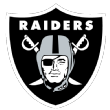
Oakland Raiders
Inside linebacker
Given how well Oakland has built its offense, it was no surprise to see the Raiders use five of their first six draft picks on defense. They improve their secondary the most, with cornerback Gareon Conley and safety Obi Melifonwu going in the first two rounds. Eddie Vanderdoes was a much-needed addition at defensive tackle in the third round.
However, the Raiders continued to neglect the middle of the field, not taking a linebacker until they grabbed Marquel Lee in the fifth round. That means Oakland still hasn't invested anything higher than a fifth-round pick into its inside linebacker depth chart, a not-so-intimidating group that includes Jelani Jenkins (a free agent signed in March), Ben Heeney, Tyrell Adams, Neiron Ball and Cory James. Great athletes such as Khalil Mack, Bruce Irvin and Karl Joseph will try to make up for this group.
NFC EAST
By Vincent Verhei
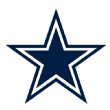
Dallas Cowboys
Pass rush
The Cowboys' biggest need entering the offseason was in the secondary, but they addressed that concern with a vengeance, signing Nolan Carroll II from division-rival Philadelphia in free agency and adding four more defensive backs in the draft. That leaves the defensive line as the biggest question mark on a team that has few other weaknesses. The projected starting quartet of Tyrone Crawford, Cedric Thornton, Maliek Collins and DeMarcus Lawrence combined for only 12 sacks in 52 total games played last year. Journeyman Benson Mayowa led the team with six sacks despite starting only six games. First-round draft pick Taco Charlton had 9.5 sacks in his senior season at Michigan but was something of a one-year wonder, and there are questions about his consistency. He enters 2017 as Dallas' most talented edge rusher, but even if he meets his potential, the Cowboys will need to find a reliable bookend on the other side.

New York Giants
Running back
New York had only 30 runs of 10 or more yards last year. Only two teams had fewer: The Vikings, who drafted Florida State's Dalvin Cook in the second round, and the Rams, who are hopeful Todd Gurley will recover from his sophomore slump. The Giants? They didn't pick a runner until late in the fourth round, when they grabbed Clemson's Wayne Gallman. Gallman is a thumper who seems to lack the foot speed to generate big plays -- his 4.6-second 40-yard dash was 19th out of 27 running backs at the combine this year. That leaves the Giants looking to their plethora of underwhelming veterans to generate some kind of spark. Neither Paul Perkins, Shane Vereen, Shaun Draughn nor Orleans Darkwa has run for even 500 yards in a season, and Perkins' 102-yard effort in Week 17 against Washington last year is the only time any of them has run for 100 yards in the past three years.

Philadelphia Eagles
Cornerback
The Eagles have bodies at this position, but most of those bodies come with serious questions. To wit:
Jalen Mills, a seventh-round draft pick in 2016, played all 16 games in his rookie season, with two starts. Per Sports Info Solutions, he allowed 8.6 yards per target in coverage, 71st out of 87 qualifying cornerbacks.
Ron Brooks missed most of 2016 with a torn quad and had to accept a 45 percent pay cut to stay with the team.
Patrick Robinson will be 30 years old this season and is on his fourth team in four years.
Dwayne Gratz, a five-year pro, spent time last year with Jacksonville and the Los Angeles Rams, neither of whom bothered to keep him.
Sidney Jones, a second-round draft pick out of Washington, tore his Achilles at his pro day and will likely miss the start of the season.
Third-round draft pick Rasul Douglas, a West Virginia product, ran a 4.59-second 40-yard dash -- 27th out of 31 corners at the combine.
Aaron Grymes, C.J. Smith and Mitchell White are likely special-teamers at best.

Washington Redskins
Cornerback
Washington could have as many as five new starters in the front seven, but it didn't do much to bolster a thin group of corners. Receivers tore this defense apart last year. Washington ranked in the bottom 10 in coverage against No. 1 and No. 2 wide receivers, all slot receivers and tight ends. Josh Norman is a fine No. 1 corner (and with a $20 million cap hit this season, he'd better be), but in three seasons Bashaud Breeland has never finished among the top 30 cornerbacks in yards allowed per target in coverage. The depth chart behind those two is woefully thin. Holdovers Dashaun Phillips, Quinton Dunbar and Kendall Fuller have only 11 starts in five NFL seasons between them. As for the draftees, third-rounder Fabian Moreau tore his pec at his pro day and will be out until at least July, while Joshua Holsey was a seventh-rounder for a reason.
NFC NORTH
By Cian Fahey
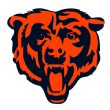
Chicago Bears
Secondary
Trading up for QB Mitchell Trubisky means the Bears failed to address a need with their first pick. Despite 57 defensive backs being taken in the draft, the Bears took only one, an injured safety. Eddie Jackson is considered a versatile player and an exceptional talent when healthy, but the Bears needed to add at least one cornerback in this draft if they were going to feel comfortable with their secondary moving forward.
Prince Amukamara has starting talent but has been let go by the Giants and Jaguars over the past two seasons because of poor play. He and Kyle Fuller, whose fifth-year option the Bears recently rejected, will be the starting tandem while Bryce Callahan is the favorite to play the slot. The Bears don't have great starters, but those starters also aren't under threat. The only real competition will take place behind Amukamara and Fuller, where Marcus Cooper and Cre'Von LeBlanc are most likely to push for playing time. Not having quality starters is bad. Not having competition for those starters is potentially disastrous.
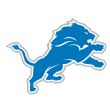
Detroit Lions
Defensive end
The Lions have enjoyed a smart offseason, rebuilding their offensive line in free agency and adding potential starters at different levels of the defense during the draft. Jarrad Davis should start at linebacker from Day 1, bringing an immediate upgrade to the front seven. That front seven, however, still needs to figure out who will play across from Ezekiel Ansah. Seventh-round pick Pat O'Connor and low-level free agent Cornelius Washington were the only additions after Devin Taylor left in free agency. Taylor could still be re-signed, but in an ideal scenario, the Lions would have found an upgrade this offseason.
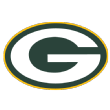
Green Bay Packers
Running back
The Packers took three running backs in the 2017 draft, but none were selected before the fourth round. Ted Thompson spent his first four picks on defense, passing on some top-tier running back prospects. The release of Christine Michael means that the Packers will enter next season with Ty Montgomery as their only veteran running back -- and calling him a veteran is a stretch because he has been a running back for less than a year.
Jamaal Williams was the highest selected running back of the rookie trio, so he will be the favorite to back up Montgomery. In theory, Williams will be a good complement to Montgomery because he is a big-bodied ball carrier. The concern is that he lacks the vision and dynamism to be more than just a sporadic contributor. The Packers might be able to get the most out of Montgomery and Williams by using them in specific situations, but the lack of versatility and experience at that spot remains a major concern.

Minnesota Vikings
Wide receiver
Dalvin Cook was a somewhat surprising selection for the Vikings in the second round of the draft. Cook's value at that spot must have appealed to the Vikings, because they could have easily waited on running back with Latavius Murray and Jerick McKinnon on the roster. Cook was the only skill-position player the Vikings took before the fifth round, when they added two rookie receivers. Those two rookies will join a crowded receiver depth chart that lacks a true third option to rely on. Ideally, the Vikings would bring in an established veteran to compete with Laquon Treadwell for that spot. Anquan Boldin is still available.
NFC SOUTH
By Andrew Potter

Atlanta Falcons
Right guard
The Falcons don't have any remaining weaknesses truly worthy of that title at this stage of the offseason. Not only is their starting lineup strong on both sides of the ball, but they have added depth at most positions to last season's relatively shallow defense while retaining almost all of their league-best offense. The one starting player lost from that offense was also its worst, as now-retired right guard Chris Chester has been replaced with former Colts starter Hugh Thornton.
While 2017 Hugh Thornton is probably an upgrade over 2016 Chris Chester, right guard is probably still the weakest starting spot on the roster. Even so, Thornton is a veteran of 32 starts in his three years in Indianapolis and a competent, if limited, starter. The biggest concern here may be health -- Thornton has never started all 16 games in a season, while Atlanta benefited from starting the same five linemen in every game last year. The Falcons added depth in the draft with Sean Harlow of Oregon State, so even if Thornton misses a handful of games, that shouldn't be a disaster for Atlanta.
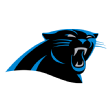
Carolina Panthers
Secondary
Carolina's defense has a standard composition under Ron Rivera: elite front seven, spare-part secondary. Rivera's Panthers have never started either the same safety tandem or the same cornerbacks in consecutive years and have only once drafted a defensive back in the first two rounds of the draft (James Bradberry, 62nd overall in 2016). Instead, they have typically relied on low-price veteran free agents like Quintin Mikell, Mike Mitchell and Charles Tillman alongside low-round draft picks such as Captain Munnerlyn, Tre Boston and Bene Benwikere. Even Josh Norman -- a star of their 2015 Super Bowl run and a fifth-round pick turned good -- was allowed to leave without much of a fight as soon as he became too expensive for their philosophy.
Panthers fans, then, will be accustomed to seeing the secondary considered a weakness. For most of those seasons, their approach has served them well -- their pass defense has been in the top third of the league by DVOA every year since 2012, and their overall defense has dropped out of the top third of the league only once (2014, 15th). Even last year, after a disastrous start to October saw the team allow more than 1,100 passing yards in just three games and release its only veteran cornerback, the Panthers still recovered to finish a respectable 10th (fifth in weighted DVOA). The returning Munnerlyn should be an upgrade over 2016 third-rounder Daryl Worley, while Mike Adams is exactly the type of solid veteran safety the Panthers just love. Still, compared to the embarrassment of riches in the front seven -- and the investment made in the team's other weaknesses on offense -- it's once again down to Rivera's staff to make their coverages work in a division jam-packed with outstanding receivers.
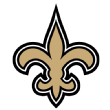
New Orleans Saints
Defensive end
After being expected to take a defensive end with their first pick of the draft, the Saints found the allure of Marshon Lattimore -- widely considered the draft's top cornerback -- too enticing to resist when the Ohio State prospect surprisingly dropped out of the top 10. It's impossible to fault them for that: cornerback and defensive end were the team's top two needs entering the offseason, and Lattimore should be a Day 1 starter and a substantial upgrade over P.J. Williams. He and Delvin Breaux should form a very decent tandem at cornerback, part of the most talented Saints backfield in what feels like forever.
But that still doesn't fill the hole on the defensive line. Third-round pick Trey Hendrickson will have a chance to compete against presumptive starter Hau'oli Kikaha for the spot opposite Cameron Jordan, but Kikaha's next healthy season will be his first, and there's very little depth behind those two. If anything were to happen to Jordan, the Saints' pass rush would be in deep, deep trouble. Darryl Tapp is still around after appearing in all 16 games last year, and last year's starter Paul Kruger is still unsigned, but neither of those players can be relied on to do much more than fill a jersey.
The one other name to watch might be former Cardinals edge rusher Alex Okafor, added in free agency. His 13.5 sacks over the past three years would have ranked second on the Saints, behind only Jordan, over that span.

Tampa Bay Buccaneers
Safety
It seems strange to say it after the team invested both a high draft pick and a high-profile free-agent signing in the position, but Tampa Bay still has concerns at safety. Last season's better starter, Bradley McDougald, is now with the Seahawks. Last season's lesser starter, Chris Conte, has been rather mystifyingly re-signed. Last season's top backup, Keith Tandy, never left, but Tandy has never really looked like much more than a reasonable backup at any point in his five-year Buccaneers career. Reputed safety conversion project Ryan Smith, who did not play a single snap on defense last year despite Conte's struggles, is returning to his natural position of cornerback.
All of which means that the Buccaneers probably will have to look to their new arrivals for improvement at the position. J.J. Wilcox, signed from Dallas early in free agency, is pretty much a like-for-like replacement for McDougald -- a fine strong safety, but not a player who will provide the deep range that the Buccaneers most noticeably lacked. Second-round pick Justin Evans could eventually be that guy but will have to significantly improve his tackling, technique, pursuit angles and play diagnosis -- a lot to ask of a young player in his rookie year. So Buccaneers fans will likely continue to see a lot more of Conte than they would hope, and the defense will still have issues in deep coverage.
NFC WEST
By Bryan Knowles
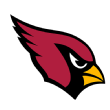
Arizona Cardinals
Quarterback of the future
It was perhaps a blessing in disguise that three teams traded up ahead of Arizona to pick first-round quarterbacks. The run on players in a mediocre quarterback class allowed the Cardinals to replace some of the 5,000-plus defensive snaps they lost in free agency instead -- losses that included Kevin Minter, Tony Jefferson, D.J. Swearinger, Calais Campbell, Marcus Cooper and Alex Okafor -- with players such as Haason Reddick and Budda Baker. Those two draftees fit Arizona's mold of versatile defenders who can be moved around as the situation warrants.
Unfortunately, that means the Cardinals enter 2017 with no significant replacement plan for Carson Palmer. Palmer will turn 38 in December and is coming off a below-average season, finishing 21st in DYAR. Behind him are the 33-year-old Drew Stanton and practice squad vet Zac Dysert, neither of whom constitute a long-term plan. The list of quarterbacks who have performed at a high level past their 38th birthday is very short, and Palmer is unlikely to buck that trend. It's obviously not a pressing need for 2017, but the sooner the Cardinals plan for life after Palmer, the better off they will be.

Los Angeles Rams
Offensive line
Down a first- and third-round pick because of the Jared Goff trade from last season, the Rams did what they could to provide Goff with some tools. Three of their first four picks went toward building a receiving corps, but that leaves the protection up front in question. The Rams allowed the second-most sacks last season while finishing 29th in both adjusted line yards and adjusted sack rate. It's hard to develop as a quarterback when you have no time in the pocket.
The Rams added to the position in free agency, with Andrew Whitworth and John Sullivan coming on board, but the rest of the line is a series of question marks. Greg Robinson has been hugely disappointing as 2014's second overall pick; he is being moved to right tackle. That means previous right tackle Rob Havenstein, who had 22 blown blocks in 2016, will bump in to right guard. Left guard Rodger Saffold had 24 blown blocks himself, per Sports Info Solutions, though it was a marked improvement over his 2015 campaign. The Rams hope the deck chair shuffling will provide something positive in 2017.
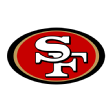
San Francisco 49ers
Right tackle
The 49ers finished last in adjusted line yards and 30th in adjusted sack rate last season, so it's safe to say the offensive line could stand an overhaul. They added Jeremy Zuttah in a pre-draft trade, but the projected starting lineup still includes three players with at least 21 blown blocks, per Sports Info Solutions: Trent Brown at right tackle, Joshua Garnett at right guard and Zane Beadles at left guard.
Of the three, Brown is the most concerning. He was an utter liability at right tackle a season ago. Ex-Seahawk Garry Gilliam will compete for the job, but even lineman-strapped Seattle wanted no part of Gilliam in 2017. The 49ers are going through a multiyear rebuilding process and had too many holes to fill in one draft. After none of their 10 draft choices were used on the offensive line, they'll have to limp through 2017 before they undergo a major overhaul.

Seattle Seahawks
Offensive line
Going into the draft, the Seahawks had needs at both tackle spots and guard. The Seahawks added Ethan Pocic in the second round and Justin Senior in the sixth, so they didn't ignore the offensive line entirely. However, Pocic's most logical fit in the NFL is at center, where the Seahawks already have Justin Britt. The Seahawks announced Pocic as a tackle at the draft, but all but one of his college games came in the interior.
This is an offensive line that has allowed 40 or more sacks in each of the last four seasons, so if this need feels like déjà vu, there's a reason for that. The Seahawks, from a very basic philosophical level, refuse to invest in the offensive line. They have ranked in the bottom three in cap spending on linemen in both 2015 and 2016. Time after time after time after time after time, the lack of talent on the offensive line gets ignored, and the Seahawks still manage to be successful. Imagine how good this team would be if Russell Wilson didn't have to run for his life every other snap.
